Why is NYC called 'The Big Apple'?
The sun rises over the Manhattan skyline in New York City in 2022. (FOX5NY)
NEW YORK CITY - New York City has many nicknames, but its most popular one is "The Big Apple."
Some other nicknames NYC has are "The City That Never Sleeps," "Empire City," "Gotham" and "The City So Nice They Named It Twice."
Now what exactly does "The Big Apple" mean, and how did it come about?
The nickname "The Big Apple" originated in the 1920s, referring to the prizes -- known as "big apples" – awarded at numerous racing courses in and around New York City, according to the New York Public Library.
However, it wasn't formally adopted as the city's nickname until the 1970s, following a successful advertising campaign aimed at attracting tourists.
According to American etymologist Barry Popik, ad executive Bill Phillips devised a campaign centered around the idea that "you have to be a little crazy to live in New York." These ads were printed on subways, buses and newspapers with the NYC skyline shown on an apple.
What was NYC called before "The Big Apple"?
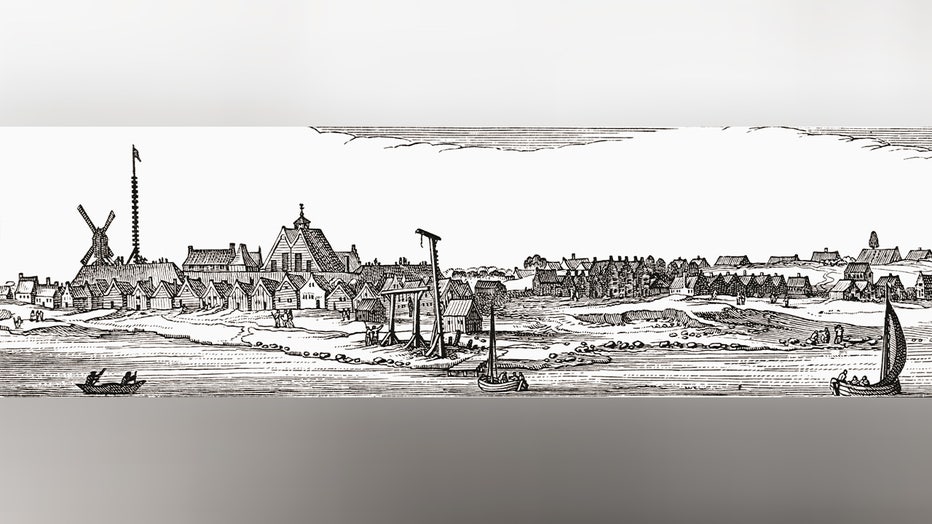
New Amsterdam, 17th-Century Dutch Colonial Settlement That Became The City Now Known As New York City. From The Book Short History Of The English People By J.R. Green, Published London 1893 (Photo by: Universal History Archive/Universal Images Group
Before the city was called "The Big Apple" – and even before it was called New York City – the area was known as "New Amsterdam."
It was named after Holland's largest city by Dutch settlers in 1624.
New Amsterdam was the capital of New Netherland, where the Dutch were very involved with the fur trade.
Take a look at the map of "New Amsterdam" back in 1664:
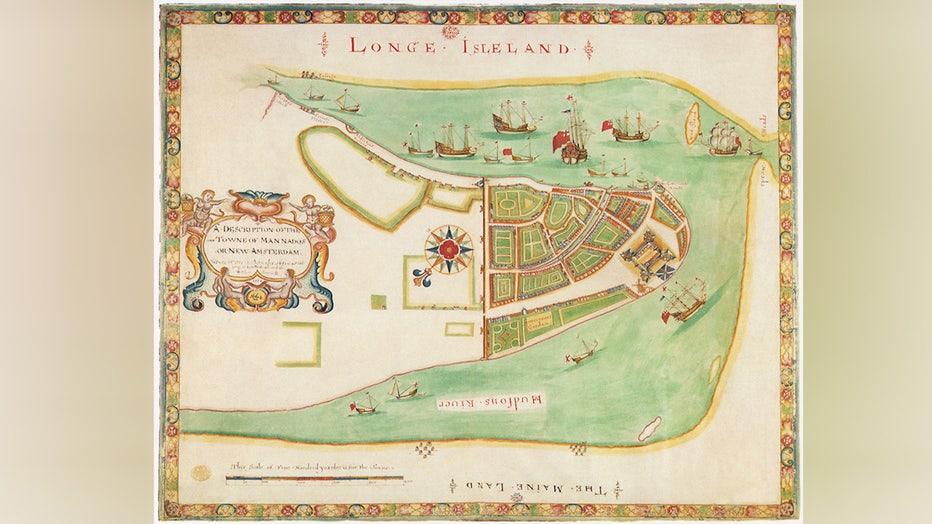
Map of New Amsterdam. 1664. (Photo by: Picturenow/Universal Images Group via Getty Images)
In 1664, the English took over New Amsterdam and renamed it New York after the Duke of York.
How did NYC become "The Big Apple"?
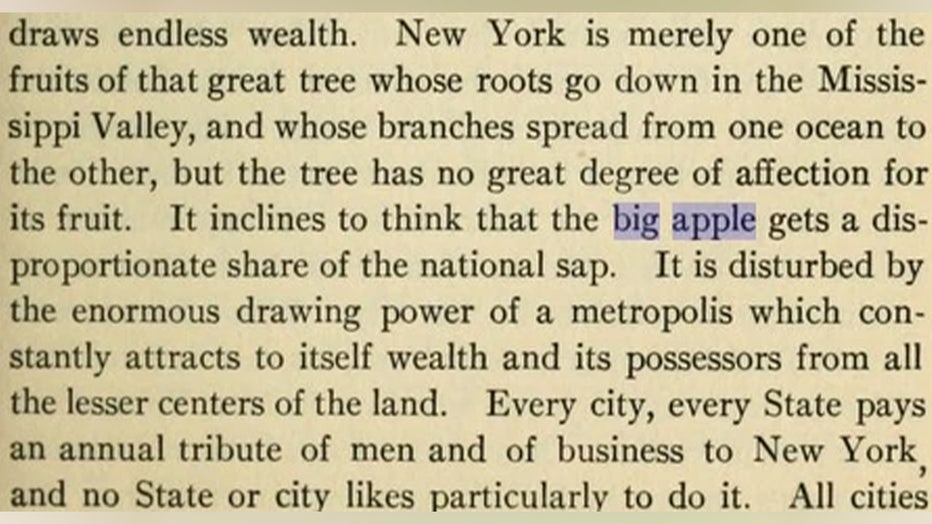
Back in 1909, the nickname "Big Apple" was used to imply a big place. (Oxford Dictionary/ New York Library)
"The Big Apple" was popularized by a sportswriter for the New York Morning Telegraph, John J. Fitz Gerald, in the 1920s, according to the NYPL. In his column, he wrote that the NYC horse racing circuit was "the big apples" of competitive racing in the United States.
Still, he didn't come up with the term. While on assignment in New Orleans, Fitz Gerald overheard African American stablehands refer to New York City racecourses as "The Big Apple."
Fitz Gerald loved the term so much that he named his racing column "Around The Big Apple."
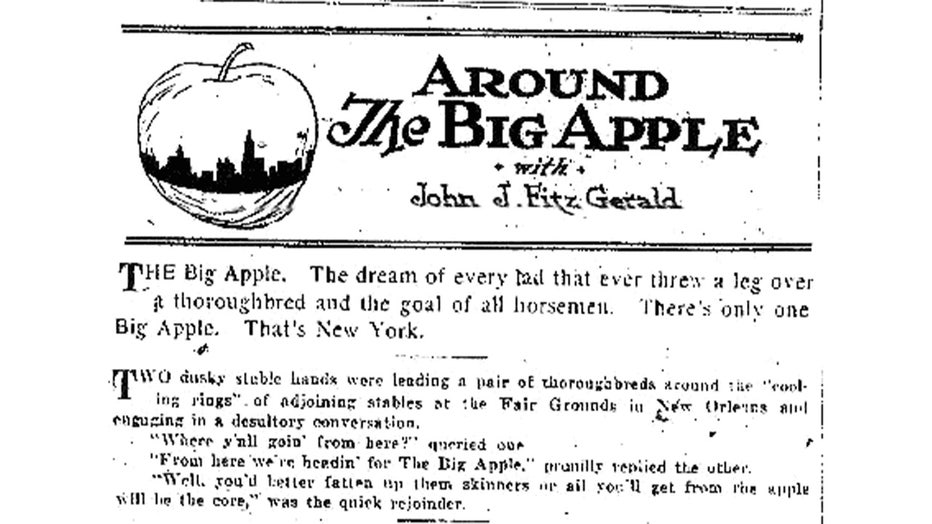
(Courtesy of Barry Popik)
While Fitz Gerald's articles had a comparatively smaller audience, the notion of the "big apple" symbolizing the epitome of the most coveted rewards and achievements gained popularity nationwide.
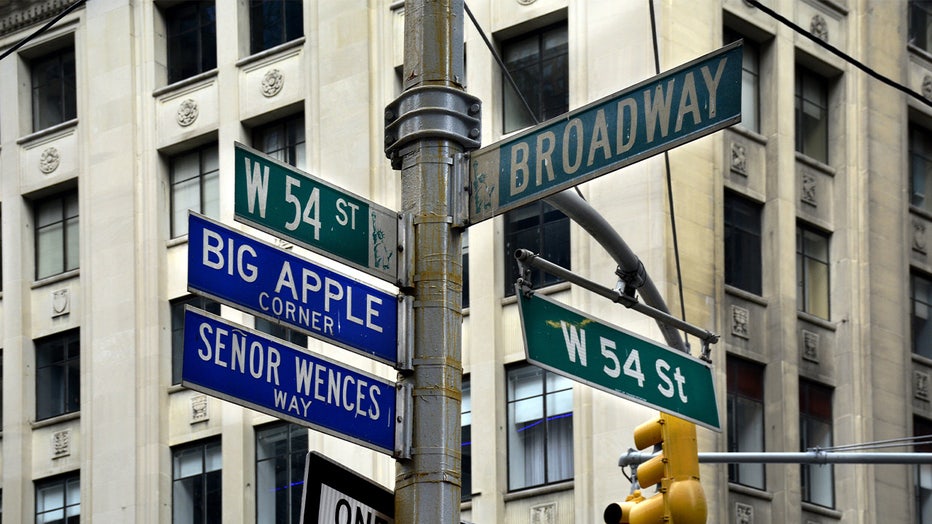
Street signs at the corner of Broadway and 54th Street in New York City identify the streets' official and honorary names. Senor Wences was a Spanish ventriloquist who made frequent appearances on CBS-TV's Ed Sullivan Show, broadcast live from the ne
In recognition of Fitz Gerald, the corner of 54th and Broadway (where Fitz Gerald lived for 30 years), was renamed "Big Apple Corner" in 1997, according to Popik.
Entering the "Jazz Age"
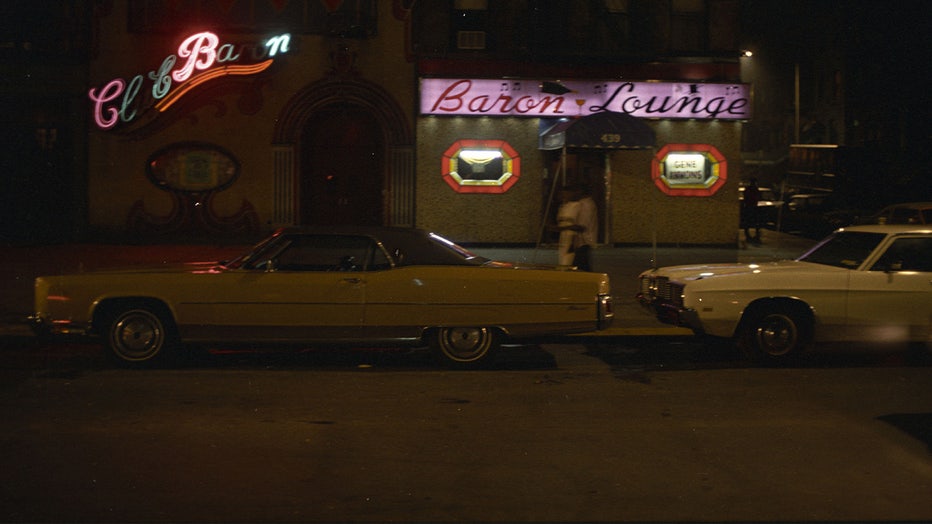
Exterior of Baron Lounge jazz club in New York City (Photo by Fairchild Archive/Penske Media via Getty Images)
In the late 1920s and early 1930s, the nickname gained recognition outside the Northeast, as jazz musicians in New York City began affectionately referring to the metropolis as the "Big Apple" in their musical compositions, according to Popik's research.
In 1934 in Harlem, a nightclub called "Big Apple" opened at the northwest corner of West 135th Street and Seventh Avenue.
Then in 1937, a "Big Apple" dance craze swept Harlem and the rest of the nation off their feet, making the "Big Apple" nickname rise in popularity.
A prevailing saying in show business emphasized that while there might be many apples on the tree, there was only one Big Apple, underscoring New York City's status as the premier venue for jazz performances.
"The Big Apple" campaign
In the late 1960s and early 1970s, New York City gained a reputation as a dark and perilous place. To boost tourism in 1971, the city initiated a campaign led by Charles Gillett, president of the New York Convention and Visitors Bureau, according to the New York Times.
Being a jazz enthusiast, Gillett aimed to revive the city's former glory by officially adopting the moniker "Big Apple" for New York City.
The campaign, with help from Phillips, showcased red apples to attract visitors, intending to present a vibrant and cheerful image in contrast to the prevailing perception of the city as plagued by crime and poverty.
The promotion of the "Big Apple" through T-shirts, pins and stickers gained popularity quickly, with the help of celebrities such as New York Knicks legend Dave DeBusschere, the Times reported.
Consequently, the city enthusiastically invited tourists to "take a bite out of the Big Apple."
"The Big Apple" nickname used today
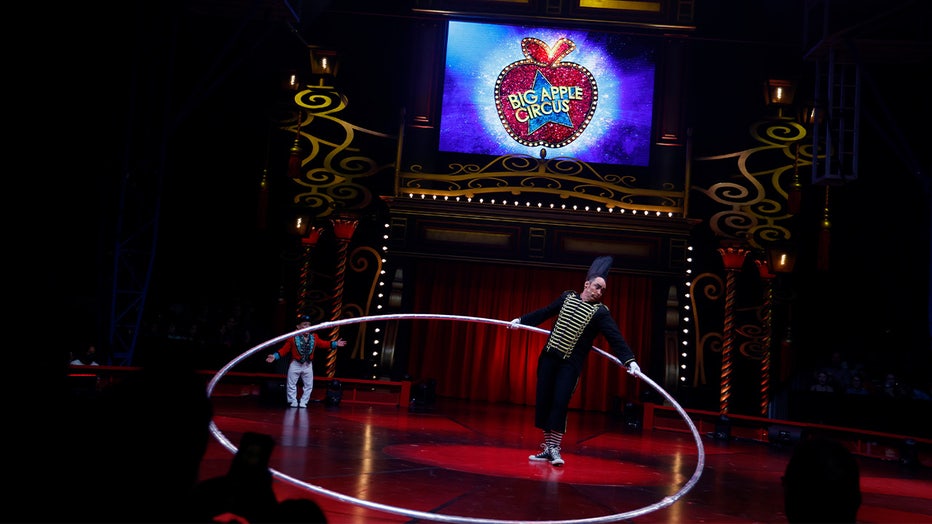
The Big Apple Circus 45th Anniversary Show, "Dream Big on November 11, 2022 in New York City. (Photo by John Lamparski/Getty Images for Big Apple Circus "Dream Big!" )
- In 1997, the Big Apple Circus was founded.
- The New York Mets have a "Home Run Apple" that rises every time a player hits a home run.
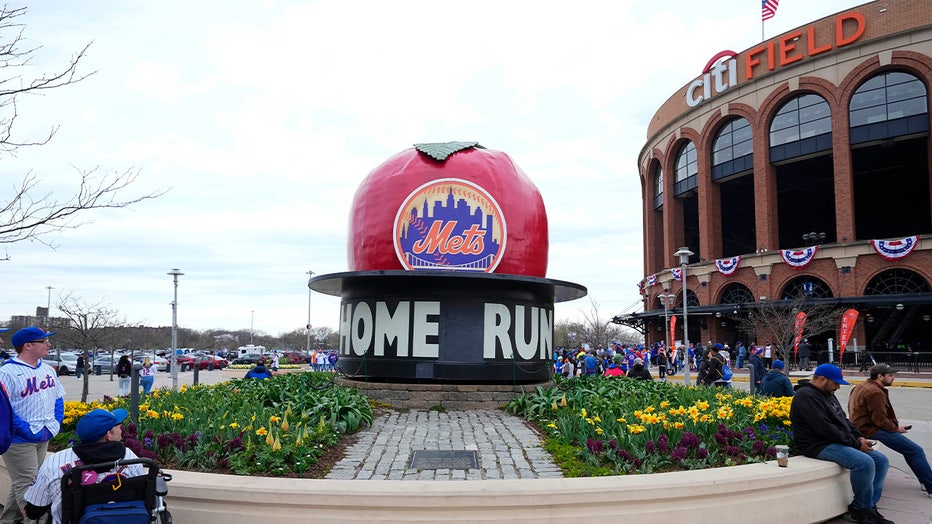
The original Home Run Hat and Apple from Shea Stadium outside of Citi Field prior to the Major League Baseball game on April 7, 2023, at Citi Field in Flushing, NY. (Photo by Gregory Fisher/Icon Sportswire via Getty Images)
- In Michael Jackson's hit "Human Nature," he references The Big Apple when he says, "If this town is just an apple, then let me take a bite."
- In the movie "Anchorman 2: The Legend Continues," Ron Burgundy gets asked why New York is called "The Big Apple," and he responds by saying, "Because, there's an apple tree on every corner!"
- Canada claims to have its own "Big Apple." A giant apple head on the side of the road in Colborne, Ontario, hosts about 500,000 visitors each year, according to the Attractions Ontario website. That pales in comparison to our Big Apple's approx. 66 million annual visitors.

